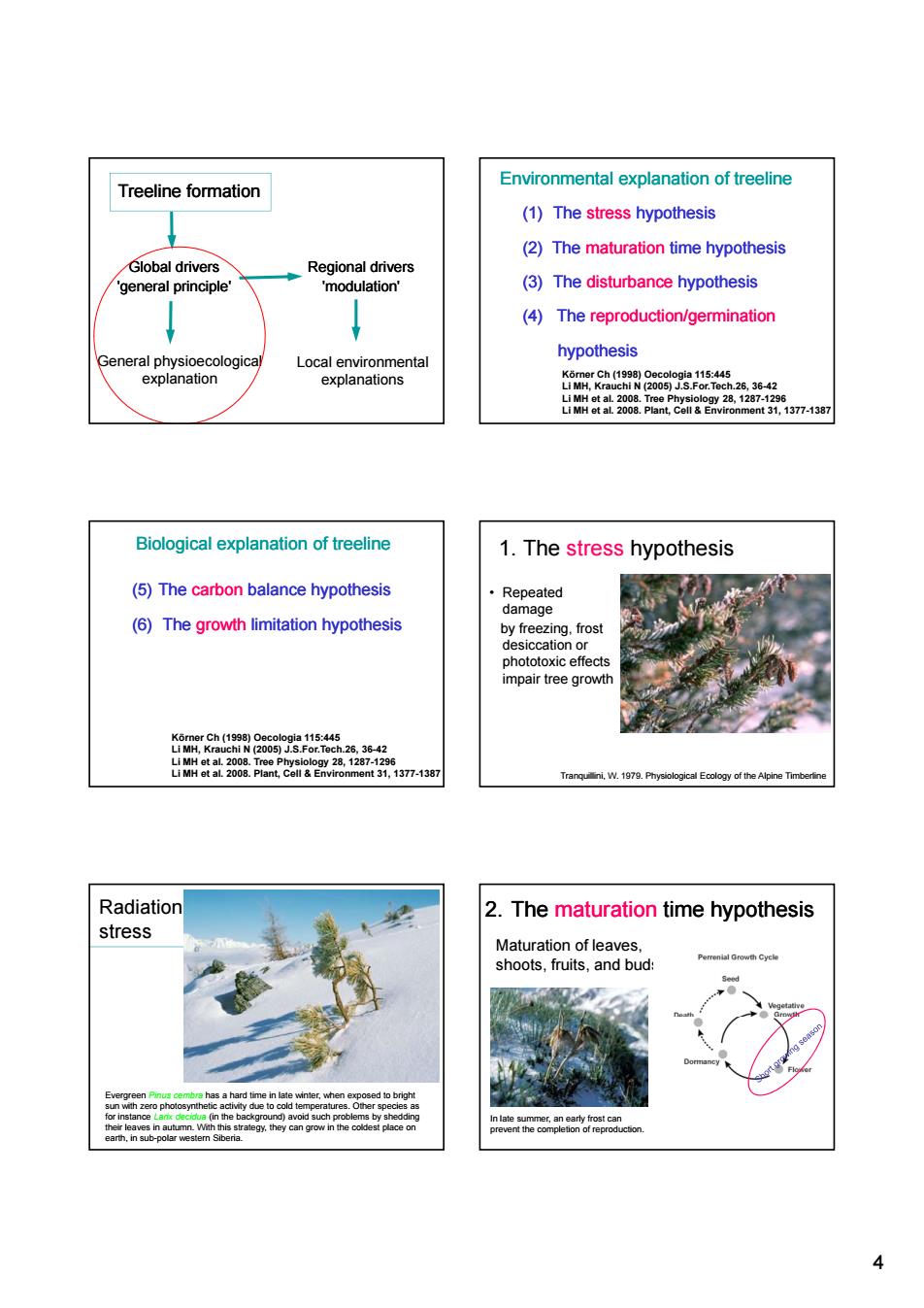正在加载图片...

Treeline formation Environmental explanation of treeline (1)The stress hypothesis (2)The maturation time hypothesis (3)The disturbance hypothesis (4)The reproduction/germination Loca2ogmaomgera hypothesis Biological explanation of treeline 1.The stress hypothesis (5)The carbon balance hypothesis (6)The growth limitation hypothesis impair tree growth Radiation 2.The maturation time hypothesis stress Maturation of leaves, shoots,fruits,and bud 4 4 Treeline Treeline formation formation Global drivers 'general principle' Regional drivers general principle 'modulation modulation' General physioecological explanation Local environmental explanations (1) The stress hypothesis (2) The maturation time hypothesis (3) The disturbance hypothesis Environmental explanation of treeline ( ) y (4) The reproduction/germination hypothesis Körner Ch (1998) Oecologia 115:445 Li MH, Krauchi N (2005) J.S.For.Tech.26, 36-42 Li MH et al. 2008. Tree Physiology 28, 1287-1296 Li MH et al. 2008. Plant, Cell & Environment 31, 1377-1387 (5) The carbon balance hypothesis (6) The growth limitation hypothesis Biological explanation of treeline Körner Ch (1998) Oecologia 115:445 Li MH, Krauchi N (2005) J.S.For.Tech.26, 36-42 Li MH et al. 2008. Tree Physiology 28, 1287-1296 Li MH et al. 2008. Plant, Cell & Environment 31, 1377-1387 1. The stress hypothesis • Repeated damage by freezing, frost desiccation or phototoxic effects impair tree growth Tranquillini, W. 1979. Physiological Ecology of the Alpine Timberline Radiation stress Evergreen Pinus cembra has a hard time in late winter, when exposed to bright sun with zero photosynthetic activity due to cold temperatures. Other species as for instance Larix decidua (in the background) avoid such problems by shedding their leaves in autumn. With this strategy, they can grow in the coldest place on earth, in sub-polar western Siberia. Maturation of leaves, shoots, fruits, and buds 2. The maturation time hypothesis e.g. seed maturation of Pinus sylvestris needs at least 600 – 890 GDD (growing degree-days >5°C) Odum 1979 In late summer, an early frost can prevent the completion of reproduction